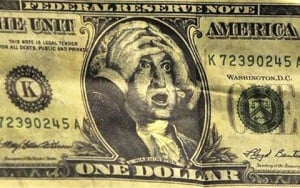
During their recent meeting in Moscow, Indian Prime Minister Narendra Modi and Russian President Vladimir Putin agreed in a Joint Declaration to conduct trade and investment in their respective national currencies (the rupee and the ruble), which amounts, without using the term, to a de facto de-dollarisation of India – a country projected to be the world’s second-largest economy in the coming years – and Russia, which has already displaced Japan from fourth spot in the global ranking measuring purchasing power, according to the World Bank. In fact, it is expected that de-dollarisation will pick up even more pace at the upcoming BRICS+ summit in Kazan in October, which Russia will chair.
On July 9, US Treasury Secretary Janet Yellen, during a question-and-answer session before the House Finance Committee, stated that her “biggest fear” was de-dollarisation due to the harshness of sanctions imposed against Washington’s adversaries who are seeking alternatives other than the dollar.
Hong Kong-based analyst William Pesek of Asia Times affirms and confirms Janet Yellen’s “extraordinary admission: De-dollarization is now her biggest fear.” Pesek contrasted Yellen’s optimism from more than two years ago when she boasted, “I don’t think the dollar has any serious competition and it’s not likely to for a long time.”
In March 2022, Russia’s demilitarisation of Ukraine had barely been underway for a month when the pugnacious Undersecretary of State Victoria Nuland, now ousted for failing in her position, was counting on the fact that the sanctions against Moscow would bring it to its knees and plummet Russia’s economic ranking. Instead, earlier this month, The World Bank announced that Russia was classified as a high-income country, affirming the West’s failed sanctions regime.
According to Pesek, two dynamics are accelerating de-dollarisation in Washington: the US national debt has increased exponentially and is now close to $35 trillion, and the US election cycle. And that was before the failed assassination attempt on candidate Donald Trump and after Biden finally announced that he was stepping down as a candidate in November’s US presidential election.
De-dollarisation seems like a paradox when, so far this year, the dollar has increased by 13% against the Japanese yen, not to mention more than 10% against the euro. However, the de-dollarisation process concerns the dollar’s status as a reserve currency.
Analysts calculate that the dollar’s strength comes from its hegemonic bond, which 11 years ago was 9.36% of global GDP. According to the International Monetary Fund, global GDP is estimated to reach nearly $110 trillion this year. Nonetheless, despite the enormous global economy, Western absolutist sycophants continue to praise the dollar and dismiss other forms of currency, such as the GeoEconomics Center of the Atlantic Council, which celebrates the buoyant US economy but hides the fact that US growth is due to the “war economy” of the military-industrial complex, whose contribution to the domestic GDP are wars in Ukraine and Gaza.
Still, despite Washington’s attempts to preserve the dollar’s dominance in global trade, India and Russia agreed to continue working together to promote a bilateral settlement system using national currencies when Modi visited Moscow on July 8-9.
Since 2023, India and Russia have doubled their payments in their national currencies despite US-led sanctions, said Russia’s largest bank, Sberbank, handles most payments for Indian exports to Russia. Naturally, this rise is expected to be even more accentuated following Modi’s visit to Moscow, especially after Indian economists and businessmen working in Russia expressed hope of benefiting from the vacuum created by the exit of Western companies.
India’s exports to Russia grew by 59% between the Financial Years 2021 and 2024, while imports surged by about 8300% due to India’s procurement of crude oil at a vastly cheap price. Although the trade deficit has risen to $57.2 billion from $2.8 billion before the war, the Indian think tank Global Trade Research Initiative notes that this surge is due to favourable trade terms, such as discounted energy, and Moscow’s need to find new markets amidst Western sanctions.
“Aiming to further accelerate and sustain the growth of bilateral trade, the leaders agreed to set the bilateral trade target to 100 billion USD by 2030,” said the 12th point of the total 81-point joint statement following the conclusion of the 22nd India-Russia annual summit.
Although New Delhi is not actively attempting to antagonise Washington by boosting trade relations with Russia and trading in national currencies, Indian decision-makers will not hold off on serving their country’s best interests, such as attaining cheap Russian energy, for the sake of US interests in Ukraine. By cutting Russia off the SWIFT system and imposing sanctions, the US, as every serious analyst warned for years, has instead accelerated de-dollarisation rather than preserving their hegemonic system.
*
Click the share button below to email/forward this article to your friends and colleagues. Follow us on Instagram and Twitter and subscribe to our Telegram Channel. Feel free to repost and share widely Global Research articles.
Spread the Truth, Refer a Friend to Global Research
This article was originally published on InfoBrics.
Ahmed Adel is a Cairo-based geopolitics and political economy researcher. He is a regular contributor to Global Research.
Comment on Global Research Articles on our Facebook page
Become a Member of Global Research
Source link

